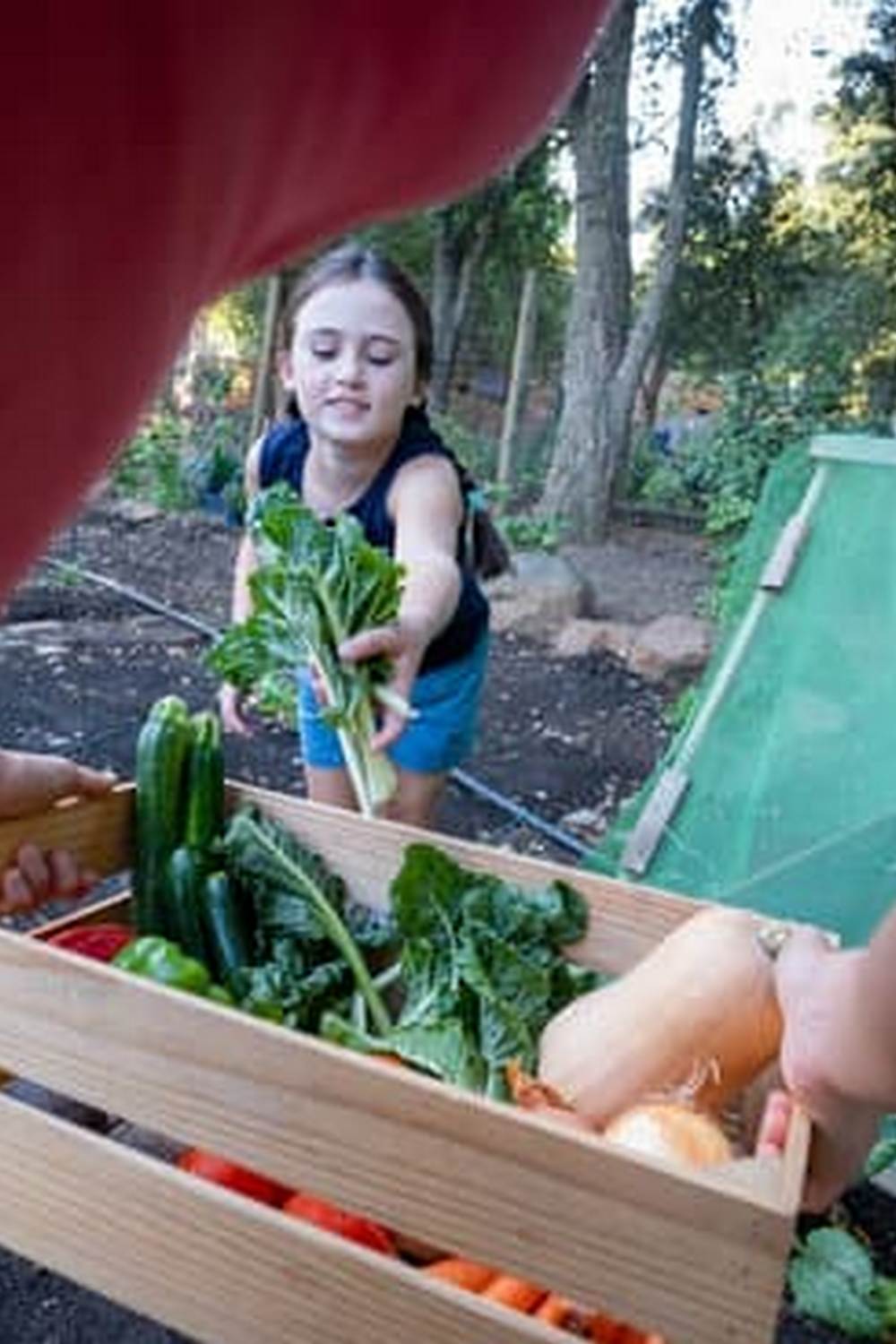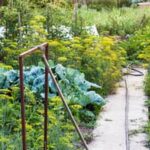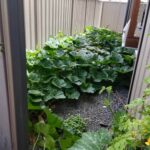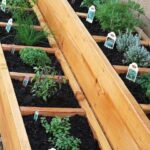Embarking on the journey of being a first-time gardener growing vegetables can be both exciting and overwhelming. Whether you have a green thumb or are completely new to gardening, starting your own vegetable garden is a rewarding experience that allows you to enjoy fresh produce right from your backyard.
One of the crucial steps in ensuring the success of your vegetable garden is choosing the perfect location. The ideal spot in your yard for a vegetable garden should receive at least 6-8 hours of sunlight daily, have good drainage, and be easily accessible for watering and maintenance. As a first-time gardener growing vegetables, finding the right location sets the foundation for healthy plants and bountiful harvests.
Once you’ve identified the best spot for your vegetable garden, it’s essential to arm yourself with the necessary tools to make your gardening journey smooth and enjoyable. From hand trowels and pruners to watering cans and gloves, having the right tools on hand can make tasks like planting, weeding, and harvesting much easier.
Stay tuned for our comprehensive list of must-have tools for successful vegetable gardening as we guide you through each step of starting your own garden as a beginner.
Essential Tools for First Time Gardeners
Starting your first vegetable garden can be an exciting and rewarding experience, but having the right tools is essential to ensure success. As a first-time gardener growing vegetables, investing in the proper gear will make your gardening journey much easier and more enjoyable.
Some of the must-have tools include a sturdy trowel for digging small holes and transplanting seedlings, a hand rake for loosening soil and removing debris, a watering can or hose for keeping your plants hydrated, and a pair of gardening gloves to protect your hands while working in the garden.
In addition to these basic tools, first-time gardeners may also benefit from having a garden hoe for weeding and cultivating the soil, a pruner for trimming plants and harvesting fruits and vegetables, and a wheelbarrow or gardening cart for transporting soil, plants, and other heavy items around the garden. It’s important to invest in high-quality tools that are durable and comfortable to use to make your gardening tasks more efficient.
To help you stay organized and keep track of your gardening activities, consider having a journal or notebook where you can record important information such as planting dates, watering schedules, pest control measures, and harvest times. Having the right tools on hand will not only make your gardening experience more enjoyable but also increase your chances of growing healthy and thriving vegetables in your first garden.
| Tools | Description |
|---|---|
| Trowel | Used for digging small holes and transplanting seedlings |
| Hand Rake | Loosens soil and removes debris |
| Watering Can/Hose | Keeps plants hydrated |
| Gardening Gloves | Protects hands while working in the garden |
Selecting the Right Vegetables
As a first time gardener growing vegetables, choosing the right vegetables to cultivate in your garden is essential for a successful and rewarding gardening experience. Here are some tips on selecting the best vegetables for beginners:
- Start with easy-to-grow vegetables: For beginner gardeners, it is advisable to start with vegetables that are low maintenance and have higher chances of success. Some good options include tomatoes, lettuce, zucchini, and radishes.
- Consider your climate and location: Different vegetables thrive in different climates and growing conditions. Before selecting which vegetables to plant, research which ones are best suited for your specific region and the amount of sunlight your garden receives.
- Choose veggies you enjoy eating: To make the most out of your gardening experience, select vegetables that you and your family enjoy eating. This will not only motivate you to tend to your garden but also ensure that you reap the rewards of harvesting fresh produce that you love.
Once you have chosen the perfect vegetables for your first garden, it’s important to consider factors such as spacing, companion planting, and succession planting to maximize the productivity of your garden. By carefully selecting the right mix of vegetables based on your preferences and growing conditions, you can set yourself up for a successful vegetable gardening journey as a first-time gardener.
- Spacing: Be sure to follow spacing recommendations provided on seed packets or plant tags to allow enough room for each plant to grow without overcrowding.
- Companion planting: Certain plants benefit from being grown together while others do not. Research companion planting techniques to optimize plant growth while deterring pests naturally.
- Succession planting: To prolong your harvest season, consider staggering planting times for certain crops or replanting after earlier crops have been harvested.
Preparing the Soil
When embarking on your journey as a first-time gardener growing vegetables, one of the most crucial steps is preparing the soil. The success of your vegetable garden heavily relies on the quality of the soil in which your plants will grow. Here is a step-by-step guide to help you properly prepare your soil for planting:
- Test Your Soil: Before anything else, it is essential to test your soil’s pH levels and nutrient content. You can do this by purchasing a simple at-home soil testing kit or by sending a sample to a local extension service for analysis.
- Loosen the Soil: Use a shovel or garden fork to loosen the soil in your chosen garden area. This will help improve drainage and make it easier for plant roots to penetrate the ground. Remove any rocks, roots, or debris that may obstruct root growth.
- Amend the Soil: Based on the results of your soil test, you may need to amend the soil with organic matter such as compost, manure, or peat moss to improve its structure and fertility. Mix in the amendments thoroughly to ensure an even distribution.
Properly preparing your soil sets the foundation for a successful vegetable garden. By following these steps and ensuring that your soil is well-balanced and fertile, you are setting yourself up for a bountiful harvest of healthy and thriving vegetables.
Remember, healthy soil leads to healthy plants, so investing time and effort into preparing your soil will pay off in the long run. With good soil preparation, you can provide your plants with the nutrients they need to grow strong and produce an abundance of delicious vegetables throughout the season.
Planting Seeds vs Seedlings
For a first time gardener growing vegetables, one of the crucial decisions to make is whether to start their garden from seeds or seedlings. Both options have their own set of advantages and disadvantages that can impact the overall success of your vegetable garden.
Planting seeds allows for a wider variety of vegetable options, as seeds are readily available in many different varieties at local nurseries or online. It also provides a sense of fulfillment and satisfaction as you witness the entire growth process from seed to harvest.
On the other hand, starting with seedlings can be advantageous for beginners who are looking for convenience and a quicker harvest. Seedlings are young plants that have already germinated and grown for a few weeks, making them more resilient to early gardening mistakes such as overwatering or poor soil conditions. This can be reassuring for first time gardeners who may feel overwhelmed by the responsibility of germinating seeds successfully.
In order to help first time gardeners navigate this decision, it is important to consider factors such as time, budget, space, and desired vegetable varieties. While planting seeds may require more patience and attention to detail, it can be a rewarding experience to see your vegetables grow from scratch. On the other hand, opting for seedlings can provide a head start in your gardening journey and ensure a more predictable outcome in terms of plant growth and harvest timeline.
| Planting Method | Pros | Cons |
|---|---|---|
| Seeds | Wide variety of vegetable options Provides satisfaction from seeing full growth process | Requires more patience May be susceptible to early gardening mistakes |
| Seedlings | Convenient and quick harvest Resilient to beginner mistakes | Limited variety options Higher upfront cost compared to seeds |
Caring for Your Plants
Watering
One of the most crucial aspects of growing a successful vegetable garden is ensuring your plants receive adequate water. For first time gardeners growing vegetables, it’s essential to understand the watering needs of each type of plant in your garden. Different vegetables have varying requirements when it comes to watering frequency and amount.
Generally, it’s recommended to water deeply but less frequently to encourage deep root growth. Consider investing in a soaker hose or drip irrigation system to deliver water directly to the roots and minimize evaporation.
Fertilizing
Proper fertilization is key to providing your vegetable plants with the nutrients they need to thrive. For beginners, using a balanced fertilizer (such as a 10-10-10 NPK ratio) once a month during the growing season is sufficient for most vegetables. Organic options like compost or manure can also be used to enrich the soil and promote healthy plant growth.
Be careful not to over-fertilize, as this can lead to nutrient imbalances and harm your plants. Always follow the instructions on the fertilizer packaging and adjust based on your specific plant needs.
Pest Control
Pests can pose a significant threat to your vegetable garden, especially for first time gardeners growing vegetables. To prevent infestations, regularly inspect your plants for signs of pests such as chewed leaves, holes, or unusual discoloration. Introducing beneficial insects like ladybugs or praying mantises can help keep pest populations in check naturally.
For more severe infestations, consider using organic insecticidal soaps or neem oil as a safe and effective method of pest control. Remember that prevention is key – maintaining healthy soil conditions and proper plant nutrition can also help deter pests from attacking your crops.
Harvesting Your Vegetables
Recognizing Maturity
Knowing when your vegetables are ready to be harvested is crucial for first-time gardeners. Each vegetable has its own signs indicating maturity. For example, tomatoes should be firm and fully colored, while carrots should have a bright orange color and a size suitable for the variety grown. It is essential to research each vegetable’s specific cues for readiness to ensure you are harvesting at the right time.
Harvesting Techniques
When it comes to harvesting your vegetables for the first time, gentle handling is key. Use sharp scissors or pruners to avoid damaging the plant. For leafy greens like lettuce and spinach, pick outside leaves first while leaving the inner ones to continue growing. When harvesting root vegetables such as radishes or potatoes, gently loosen the soil around them before pulling them out to prevent breakage.
Tips for Maximum Yield
To maximize your vegetable yield as a first-time gardener, consider succession planting – sowing seeds or planting seedlings at intervals – to ensure a continuous harvest throughout the season. Additionally, regular harvesting encourages plants to produce more fruits or vegetables.
Be sure not to leave overripe vegetables on the plant too long as this can signal to the plant that it no longer needs to produce more. By following these tips and techniques, first-time gardeners can enjoy a bountiful harvest from their vegetable garden.
Troubleshooting Common Issues
As a first-time gardener growing vegetables, it is important to be prepared for the common problems that may arise during your gardening journey. One of the most common issues that new gardeners face is over or underwatering their plants. It is essential to strike the right balance and monitor your plants regularly to ensure they are receiving the proper amount of water. Investing in a moisture meter can be a helpful tool in gauging when your plants need watering.
Another challenge that many beginner gardeners encounter is pests and diseases affecting their vegetable plants. To combat this, it is crucial to stay vigilant and inspect your plants regularly for any signs of pests or diseases. Implementing organic pest control methods such as neem oil or introducing beneficial insects can help protect your garden from harmful pests while maintaining a healthy environment for your vegetables to thrive.
Lastly, first-time gardeners may also struggle with nutrient deficiencies in their soil, leading to stunted growth and poor production of vegetables. Conducting regular soil tests and amending the soil with organic fertilizers can help replenish essential nutrients for your plants.
Remember that gardening is a learning process, and each challenge you face provides an opportunity to learn and improve your skills as a vegetable gardener. With determination and patience, you can overcome common issues and enjoy a successful harvest from your first vegetable garden.
Frequently Asked Questions
What Vegetables Can a Beginner Gardener Grow?
Beginner gardeners can grow easy-to-care-for vegetables such as tomatoes, lettuce, radishes, and zucchini. These vegetables are generally low maintenance and are ideal for those new to gardening.
How Do I Plan My First Vegetable Garden?
Planning your first vegetable garden involves selecting a suitable location with adequate sunlight, preparing the soil by adding compost or fertilizer, deciding which vegetables to grow based on your preferences and climate, and considering factors like spacing and watering requirements.
What Is the Best Month to Start a Vegetable Garden?
The best month to start a vegetable garden depends on your location and the climate in your area. In general, late winter or early spring is a good time to start planting cool-season crops like peas and lettuce.
Warmer regions may allow for planting as early as February or March, while colder climates might need to wait until April or May. It’s important to consider frost dates before planting to avoid any damage to young plants from unexpected cold snaps.

If you’re looking to get into vegetable gardening, or are just looking for some tips on how to make your current garden better, then you’ve come to the right place! My name is Ethel and I have been gardening for years. In this blog, I’m going to share with you some of my best tips on how to create a successful vegetable garden.





